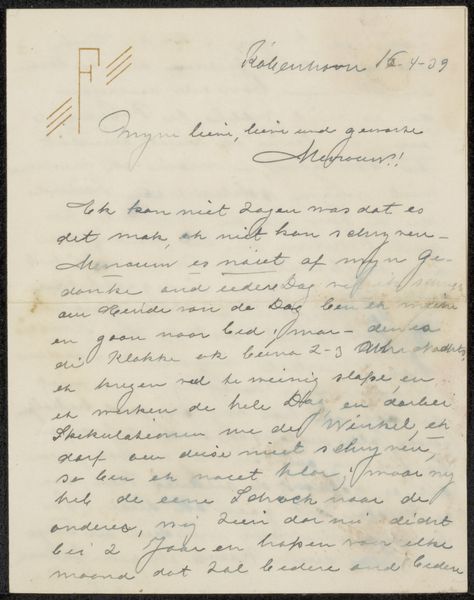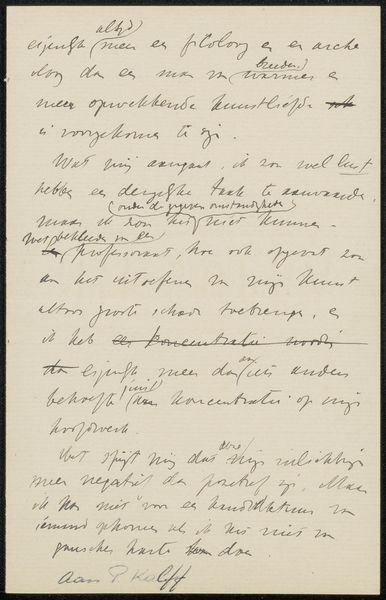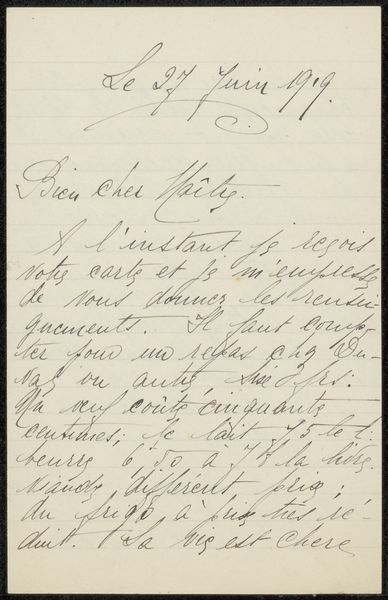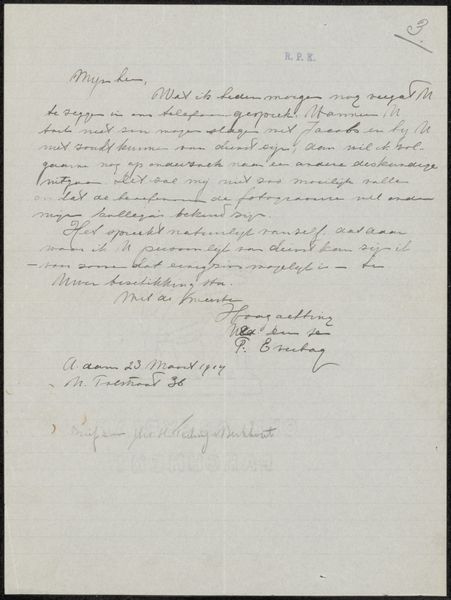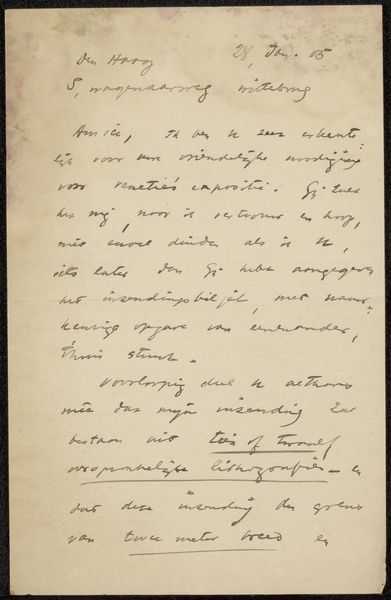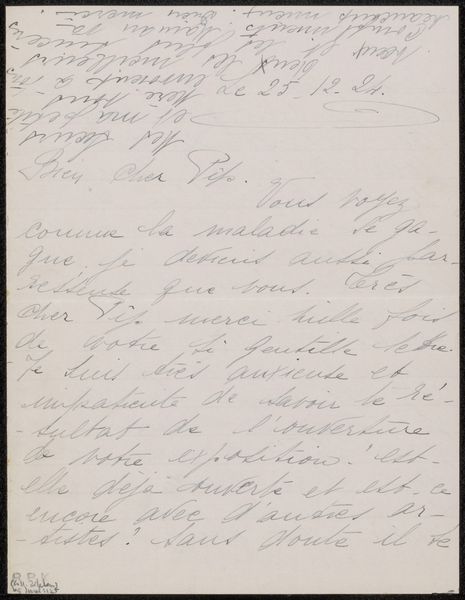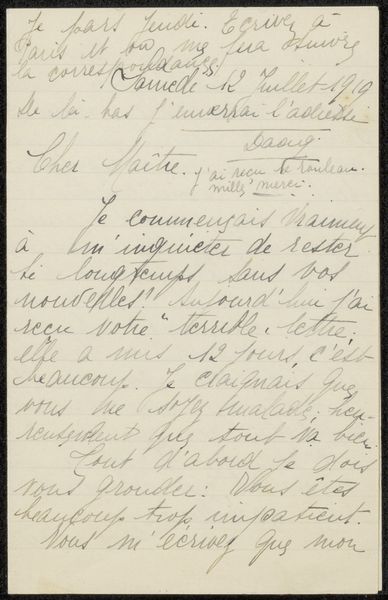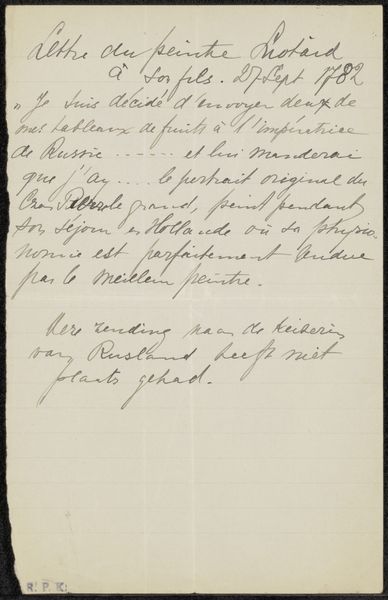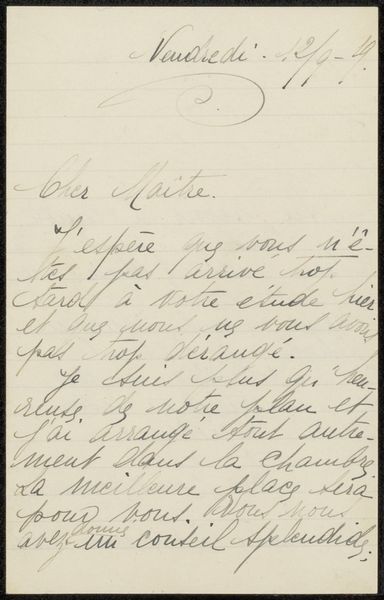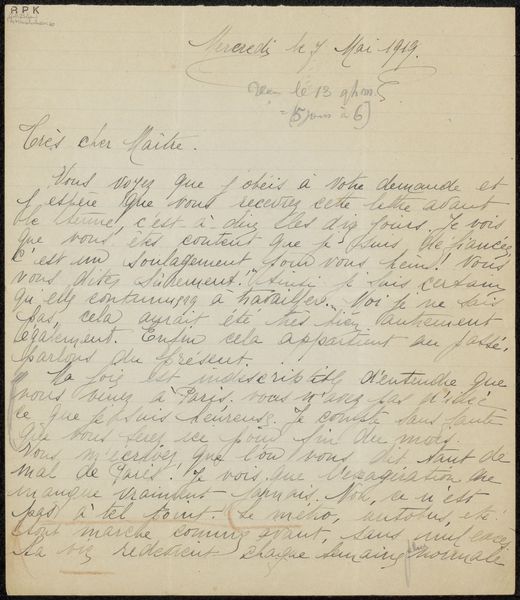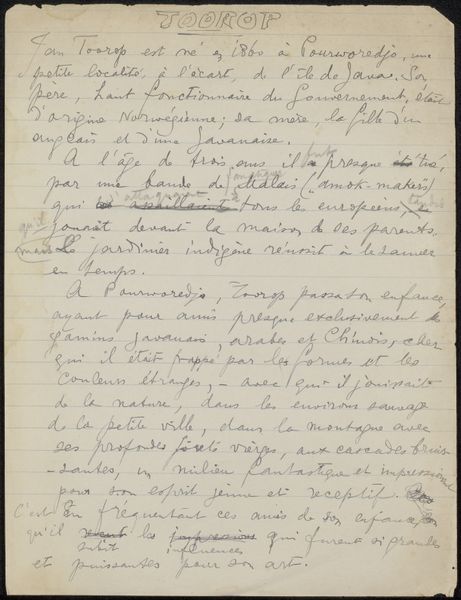
Brief aan Pieter Haverkorn van Rijsewijk Possibly 1894 - 1895
0:00
0:00
drawing, paper, ink, pen
#
portrait
#
drawing
#
hand written
#
hand-lettering
#
hand drawn type
#
hand lettering
#
paper
#
personal sketchbook
#
ink
#
hand-written
#
hand-drawn typeface
#
pen work
#
sketchbook drawing
#
pen
#
sketchbook art
Copyright: Rijks Museum: Open Domain
Curator: This intriguing piece is entitled "Brief aan Pieter Haverkorn van Rijsewijk," likely dating from 1894-1895 and housed in the Rijksmuseum. It’s attributed to Johan Hendrik Weissenbruch, rendered in pen and ink on paper. Editor: Immediately, the script captivates. It has such a gossamer quality, almost delicate. I imagine the paper feels quite smooth, but perhaps a bit worn, hinting at handling, and time. The lines of the underlying page create this visual grid, disrupting its fine calligraphic features. Curator: Absolutely. Weissenbruch employed the written word itself as a means of artistic expression. Consider the letter form, the sweeping curves—each carries the weight of personal and professional discourse, layered with emotions we can only speculate about now. The script hints to both a classical calligraphic tradition and burgeoning avant-garde typography. Editor: But think of the tools at play. The pen, the ink, the paper itself, cheap squared letter-writing stock, the very *stuff* of correspondence at the end of the 19th century. I’m more curious about the maker, and how that labor inflects its social moment in history. Is there a trace of daily activity within the form? The material is what helps make the content communicable, no? Curator: That’s an astute observation. Though ostensibly functional as a means of interpersonal exchange, Weissenbruch’s rendering suggests a layered symbolism. The use of language and handlettering also signifies intentionality, a self-aware creation made by its writer and perhaps even its intended recipient. Editor: Still, the form really fascinates me. Note the material act of writing – this repeated hand motion. I wonder what the relationship was to literacy? Also, the constraints and parameters in writing a letter and how that played a role in its production. Did he intend to create artwork with those features in mind? Curator: A thought-provoking angle on intent. Ultimately, this "Brief" functions on several levels: as a simple message, as a peek into past concerns, and as a crafted record in cultural history. Editor: I agree. We've gained insights into production as well as historical weight behind this unusual material exchange, a wonderful blend of the personal and artistic sphere.
Comments
No comments
Be the first to comment and join the conversation on the ultimate creative platform.
